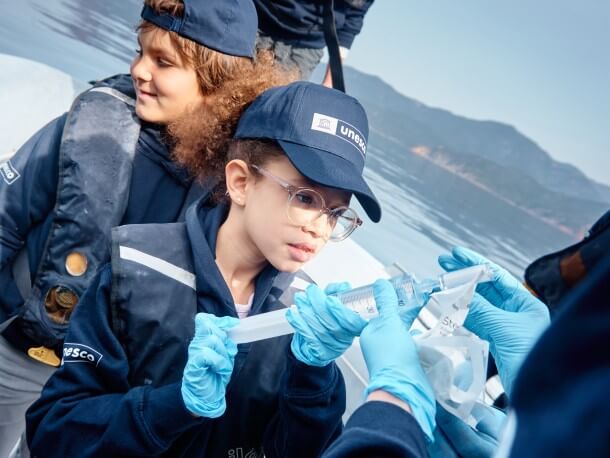
As the UN Biodiversity Conference (COP 15) opens today, UNESCO is establishing a global biodiversity snapshot of marine species across 25 of the world’s most unique marine protected areas. Analysis of these samples will help us understand how biodiversity hotspots are shifting due to climate change and where to focus conservation efforts in the future.
Today marine protected areas across the world help safeguard vital species. But as ocean temperatures rise, species are increasingly forced to flee their natural homes in search of cooler waters. In the long term, the protected areas may no longer match the places where species live. This requires regular assessment of the situation.
“Collecting more evidence and sharing that knowledge more rapidly and openly has never been more important in tackling the existential crisis humanity faces with climate disruption. To address this challenge, UNESCO is mobilizing its wide-reaching network of partners in the natural marine sites it protects.” – Audrey Azoulay, UNESCO Director-General
A global initiative that combines science and education
The UN Sciences Organization has decided to accelerate mapping marine species across some of the world’s most exceptional ocean places. In combination with rising temperature projections, the initiative will help us visualize and detect changes. To achieve this, the Organization is using the most advanced technique: environmental DNA (eDNA).
In the way that forensic DNA testing can draw data from a single hair, eDNA sampling identifies the species that live in an area by analyzing just a couple of liters of water. It’s a cost-effective, early-detection tool for changes, and is non-invasive to local wildlife.
The UNESCO method combines science and education, by working with local schools. Hundreds of students are being trained to participate in the environmental DNA expeditions collecting ocean data themselves. This active involvement by citizens is key to raising awareness about biodiversity loss and fostering a love of science in the leaders of tomorrow.
A pilot phase with 25 World Heritage sites
Once collected, the samples are then analyzed in the laboratory by scientists, based on a common methodology established by UNESCO under the supervision of a high-level advisory board of experts. As part of UNESCO’s commitment to Open Science all results obtained from this programme will be made publicly available through our Ocean Biodiversity Information System (OBIS).
UNESCO has selected 25 marine World Heritage sites located around the world for an initial pilot phase. Sampling began in September 2022. It has already taken place at sites located in Australia, Brazil, Costa Rica, Denmark, Germany and the Netherlands. Other samples are planned in the coming months at sites in Bangladesh, Belize, France, Mauritania, Mexico, Panama, United-States, Sudan, Yemen, etc.
***
Media contact: François Wibaux
Email: f.wibaux@unesco.org